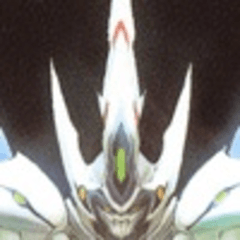Basic Shading Tutorial
INTRODUCTION
Hi everyone!
Evelyn here. In this tutorial, I'll be showing you guys how I do shading in a very basic and simple way. I hope it'll be helpful! References, video tutorials, and brushes will be down below as well.
BRUSHES
SKETCH AND LINEART
For my next picture knew I wanted to draw something cheery, soft, and vibrant so I came up with this. In the video, I talk about the reference pictures I used in case you want more information on it.
And finally, I made the lineart.
COLOR PALETTE/ BASE TONE
Usually, I like to make a color palette beforehand, I think it helps me to keep a limited palette and not add colors to make it "pretty" and keep with the aesthetic or theme of the piece. It saves me a bit of time during the editing process.
So this time, I decided to make a color palette after I finished the piece. You guys are more than welcome to use it if needed.
I start all of my drawings from background to foreground and then coloring in the base tones.
I'll talk about drawing the background briefly as today we're mostly focusing on the shading. The trees were done with the brush below, then blurred with "Gaussian blur" and finally colored over.
The grass was done with the "Dense Watercolor" brush and feathered out towards the end to make it seem like grass.
The left side lightened to show light source, and the right side darkened to demonstrate shadow.
SHADING - SHADOWS
Now that the flat colors have been established, lets get to the shading. In the image below this is usually high I shade. Using the "Soft Airbrush" tool, "Smooth Watercolor" tool, and "Dense Water Color" tool.
The shadows were set to multiply on each layer (decided to make them a warmer tone), and the highlights on a screen layer (cooler tone in blue). Remember to leave some light on the shadows as light can bounce off and reflect depending on the surface. Which is why you see a part of the shadow area lighter.
I start the shading using the "Soft Airbrush" tool and go over the general areas to establish shadows.
At the same time, in a separate layer, I add the skin tone color to the upper and lower part of the dress. For the knees, and thighs area I add the same color there too, but to show that the leggings are a bit transparent/see-through in certain areas.
I repeat the process again, on a different layer and this time push the shadows on the body a bit more, alternating between the "Dense Watercolor" and Smooth Watercolor" tools.
Careful not to over blend, so the structure of the limps hold together.
Next I really went in with the deeper shadows, alternating again between the "Dense watercolor" and "Smooth Watercolor" brush. The "Dense Watercolor" brush was used to apply the shadows everywhere, while the "Smooth Watercolor" brush was used to blend certain areas.
For the clothing I switched over to the "Gouache" brush, smoothing out certain small areas and then switching over to the "Gouache Blender" brush to give it some texture.
I really enjoy using these two brushes because it helps give clothing a nice texture without having to add more layers or overlay textures to give it the look of fabric.
SHADING - HIGHLIGHTS
Next up is shading the highlights or lighter parts, although honestly, it is pretty simple and quick.
On a separate layer, set on screen, with a cool blue tone, I added the highlights on the area where the light would hit the most. Make sure to not go overboard on certain areas as it could turn to white real quick.
Merge all the visible layers onto a new layer > Add a new Raster layer > Clip to layer below > Set to Screen > Use large "Soft Airbrush" tool and go over the general bright areas with the same cool blue tone used for the previous highlights.
Next add a new raster layer > Clip it to the layer below as well > Set to Multiply > Use large "Soft Airbrush" tool and go over the general darker areas with the same warm red tone used for the previous shadows.
Finish adding some final details and adjust the screen and multiply layers as you fit once you make the background visible.
I added one more screen layer, and with the largest size the "Soft Airbrush" tool could go, I added the final highlights
Finished rendering the entire piece and getting rid of the lineart layer.
THANKS
---























Commentaire